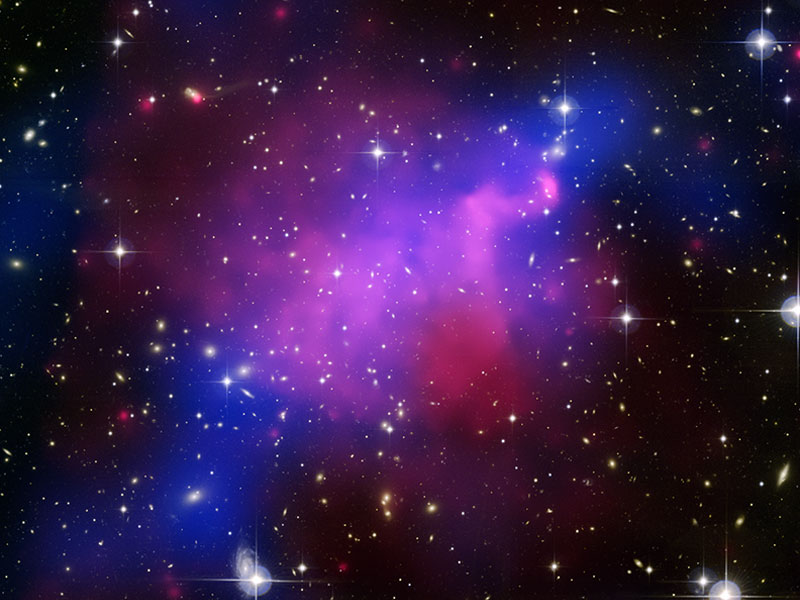
|
Credit: X-ray: NASA /
CXC/
U. Victoria/
A. Mahdavi et al.
Optical/Lensing: CFHT/ U. Victoria/ A. Mahdavi et al.
Explanation:
Huge clusters of galaxies are surely colliding in Abell 520 but astrophysicists aren't
sure why the dark matter is becoming separated from the normal matter.
The dark matter
in the above multi-wavelength
image
is shown in false blue, determined by carefully detailing how the
cluster distorts light
emitted by more distant galaxies.
Very hot gas, a form of normal matter, is shown in false red, determined by the
X-rays
detected by the Earth-orbiting
Chandra X-ray Observatory.
Individual galaxies dominated by
normal matter appear yellowish or white.
Conventional wisdom holds that dark matter and normal matter are attracted the same
gravitationally, and so should be distributed the same in
Abell 520.
Inspection of the
above image,
however, shows a surprising a lack of a concentration of
visible galaxies along the dark matter.
One hypothetical answer is that the discrepancy is caused by the
large galaxies
undergoing some sort of conventional gravitational slingshots.
A more controversial hypothesis holds that the dark matter is colliding with itself
in some non-gravitational way that has never been seen before.
Further simulations and study of this cluster may resolve this scientific conundrum.
Optical/Lensing: CFHT/ U. Victoria/ A. Mahdavi et al.
|
January February March April May June July August September October November December |
| ||||||||||||||||||||||||||||||||||||||||||||||||
NASA Web Site Statements, Warnings, and Disclaimers
NASA Official: Jay Norris. Specific rights apply.
A service of: LHEA at NASA / GSFC
& Michigan Tech. U.
Based on Astronomy Picture
Of the Day
Publications with keywords: cluster of galaxies - dark matter
Publications with words: cluster of galaxies - dark matter
See also:
